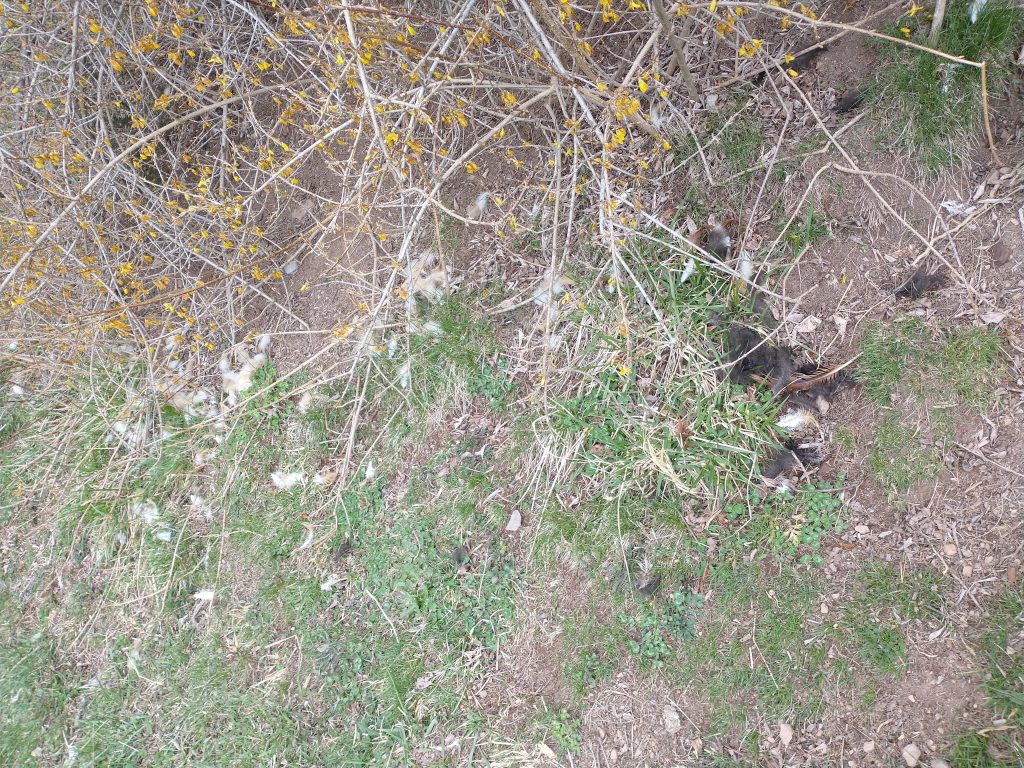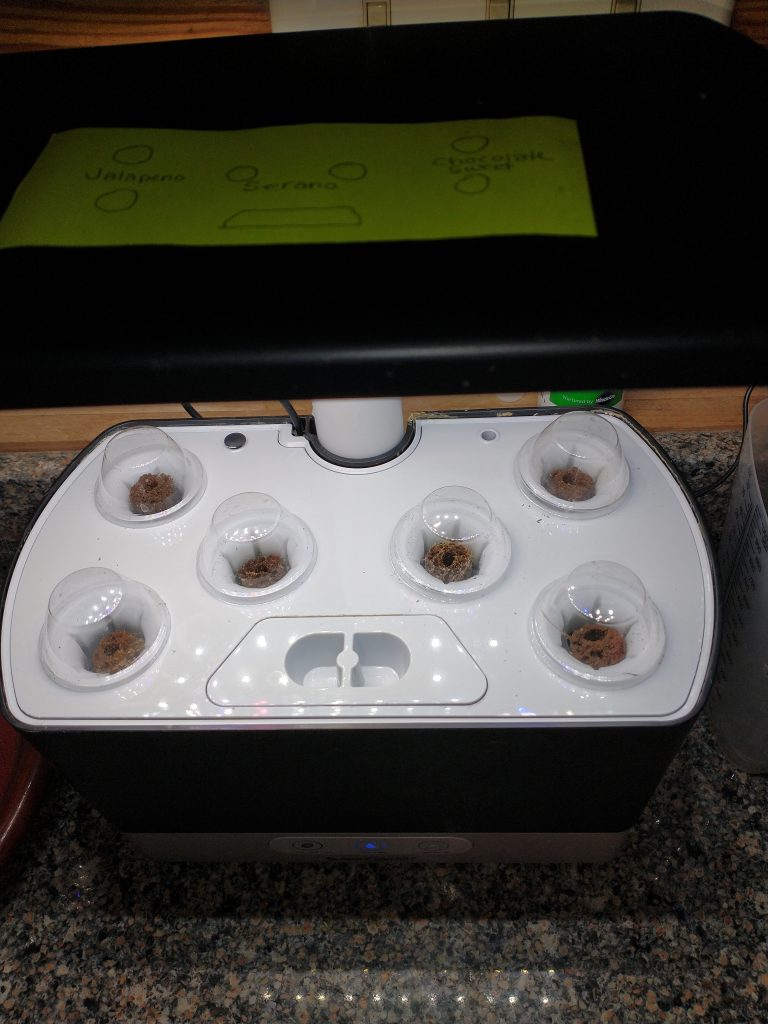With the strong back and strength of a 16 year old assistant in the form of a Grandson, several farm issues have been addressed in the past 5 days. He fortunately is very amenable to and volunteering to help, in the garden or the kitchen. He is being kept busy and well fed.
On Saturday, we attacked the wire grass that was trying to overtake the spot in the garden where the comfrey grows. The grass was so high, finding the sprouting comfrey was a challenge. We didn’t get it all, but the comfrey has a fighting chance now. When he arrived last week, he and his Dad had purchased a large dog crate to control their two dogs until Son2 left on Wednesday. The dogs left with him, the crate put in their RV that is parked on our farm. The box is going to become a weed barrier above the asparagus bed soon.
Yesterday, after the three of us went to lunch, a walk, and to the local nursery to get raised bed soil for one of the boxes, we drove down and around the south field to see the new welded wire fence and how much clearing/damage the neighbor did installing his fence. We discovered a very long strand of high tensile fence wire with a long strand of barbed wire dragged into our hayfield but still attached to an uprooted shrub in the thicket on the edge of the field. Fortunately we discovered it before the hay got high and before the hay guy got it tangled in his equipment. Grandson and I spent a couple of hours winding the wire, tying it off with cable ties, cutting it where it was entangled in the uprooted shrub. We then walked the perimeter of the field to make sure there was no more of it out in the grass.
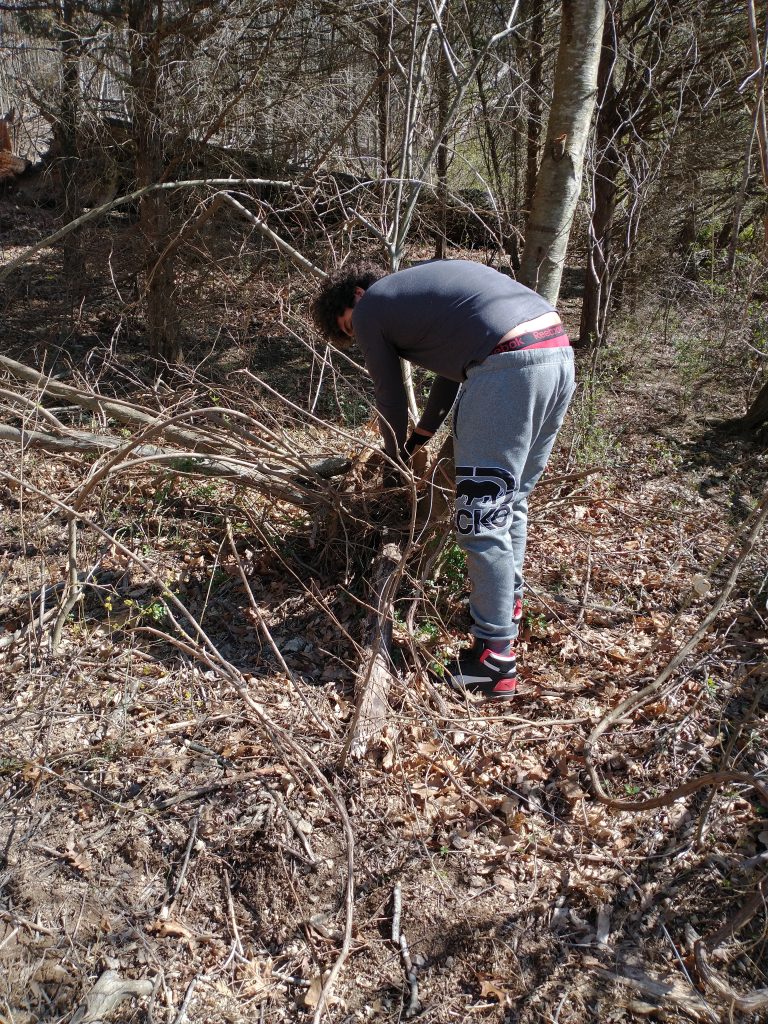
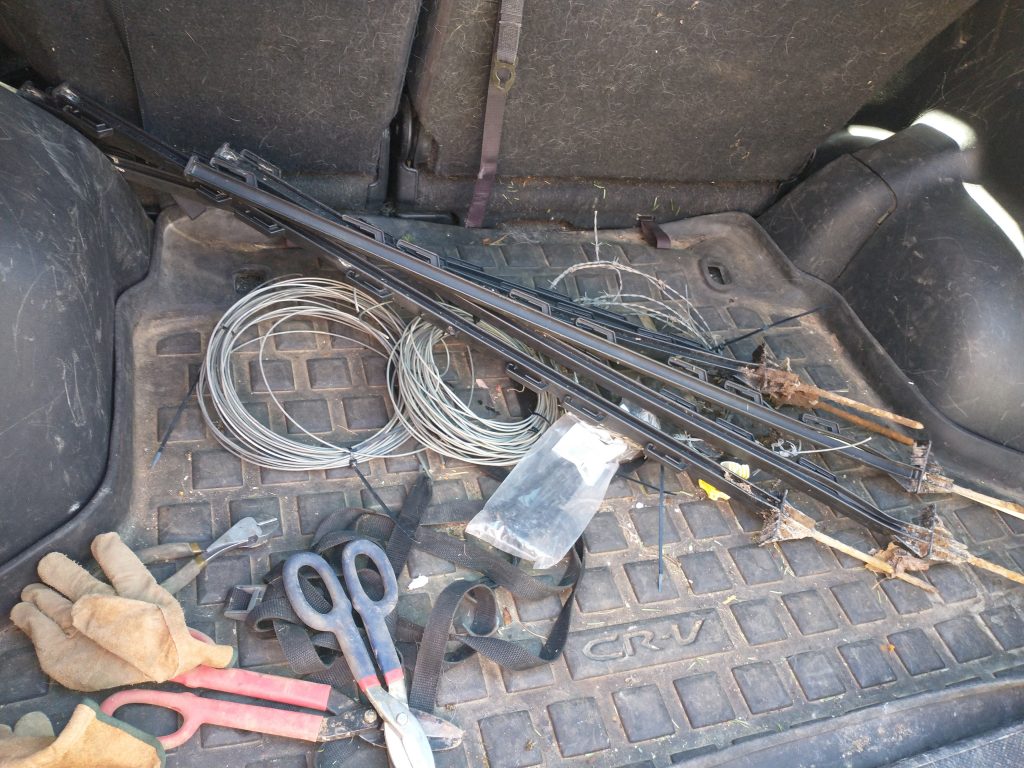
It is a mystery to me, how farmer’s even work with that stuff. It is difficult to straighten, impossible to bend, and acts like a stiff Slinky toy.
After we finished there, he helped me move a couple barrows of compost to two beds, and spread the bagged raised bed soil into one.

That bed needs one more barrow of compost and it will be ready to plant. Today we purchased 4 more bags of raised bed soil and 6 bags of composted cow manure for the long bed.
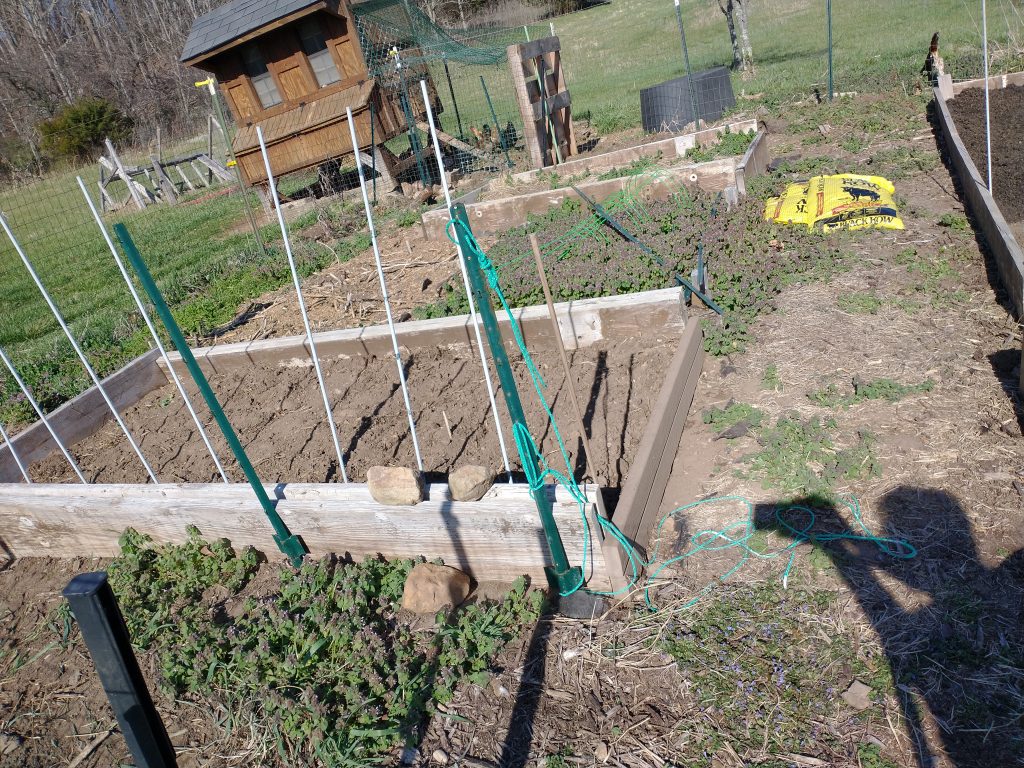
This bed received a barrow of compost yesterday and was planted in peas, radishes, carrots, and spinach today. They should have been planted 3 weeks ago, but it is what it is. The long bed had as much Dead Nettle in it as the square bed behind this one.
This afternoon after planting the bed, the weeding of the long bed was begun and the 4 bags of soil and 4 of the bags of composted cow manure were added to it. I need 5 more bags of soil and the remaining two bags of compost added and it will be ready to plant in early May.
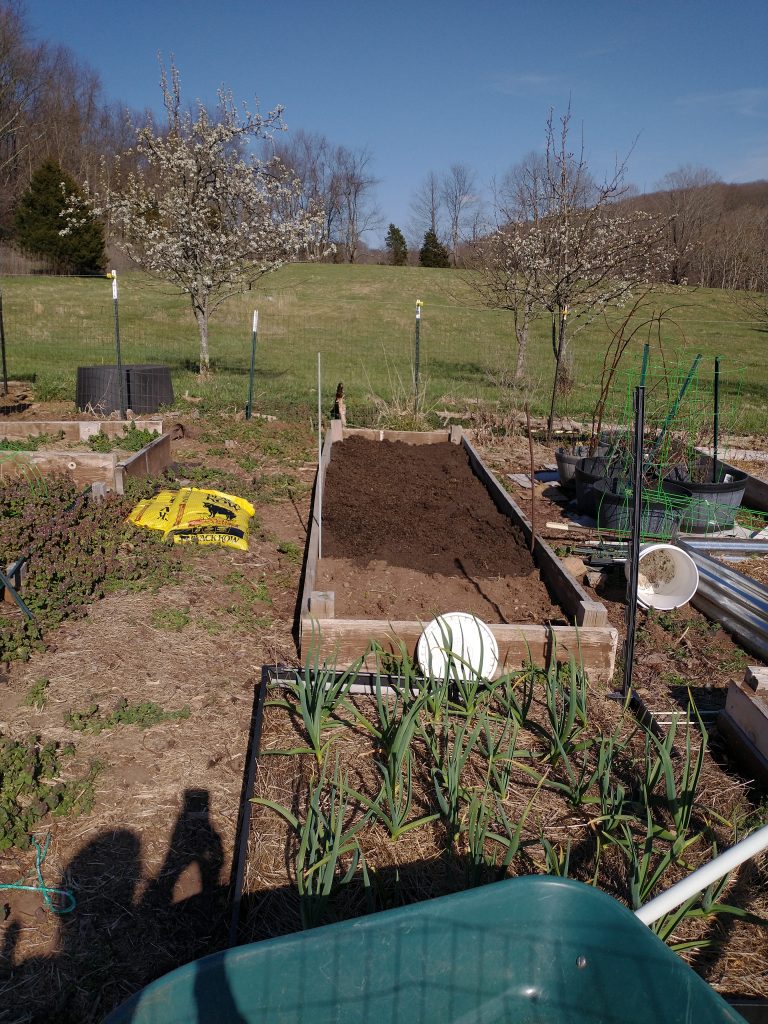
That bed is where the mint was a few years ago, it has never had enough soil that was good enough to plant, so hopefully today’s efforts and the addition of a few more bags of soil and compost will make it a healthy bed.
That last little 4 foot bed is being left alone for now as the bees are loving the Dead Nettle growing in it. It will have to be cleared by Mother’s Day to plant peppers and the bed behind it needs a light weeding, but it was covered in old hay over the winter and is in pretty good shape, though it will get fed with the remaining compost. The new pile has been started with the weeds being pulled. The paths will just be mowed or cut with the string trimmer this year. My shoulder just will scream if I try to take on all of that grass and weed pulling.
It was nice to be out in the 70 degree weather to get the garden underway. The garden plan was revisited as I realized there were seed packets purchased of vegetables not worked into the plan. Hopefully, it will be a successful garden and feed us well this year and into next winter. The garden gets more difficult to deal with each year, but I’m not ready to give up yet.

